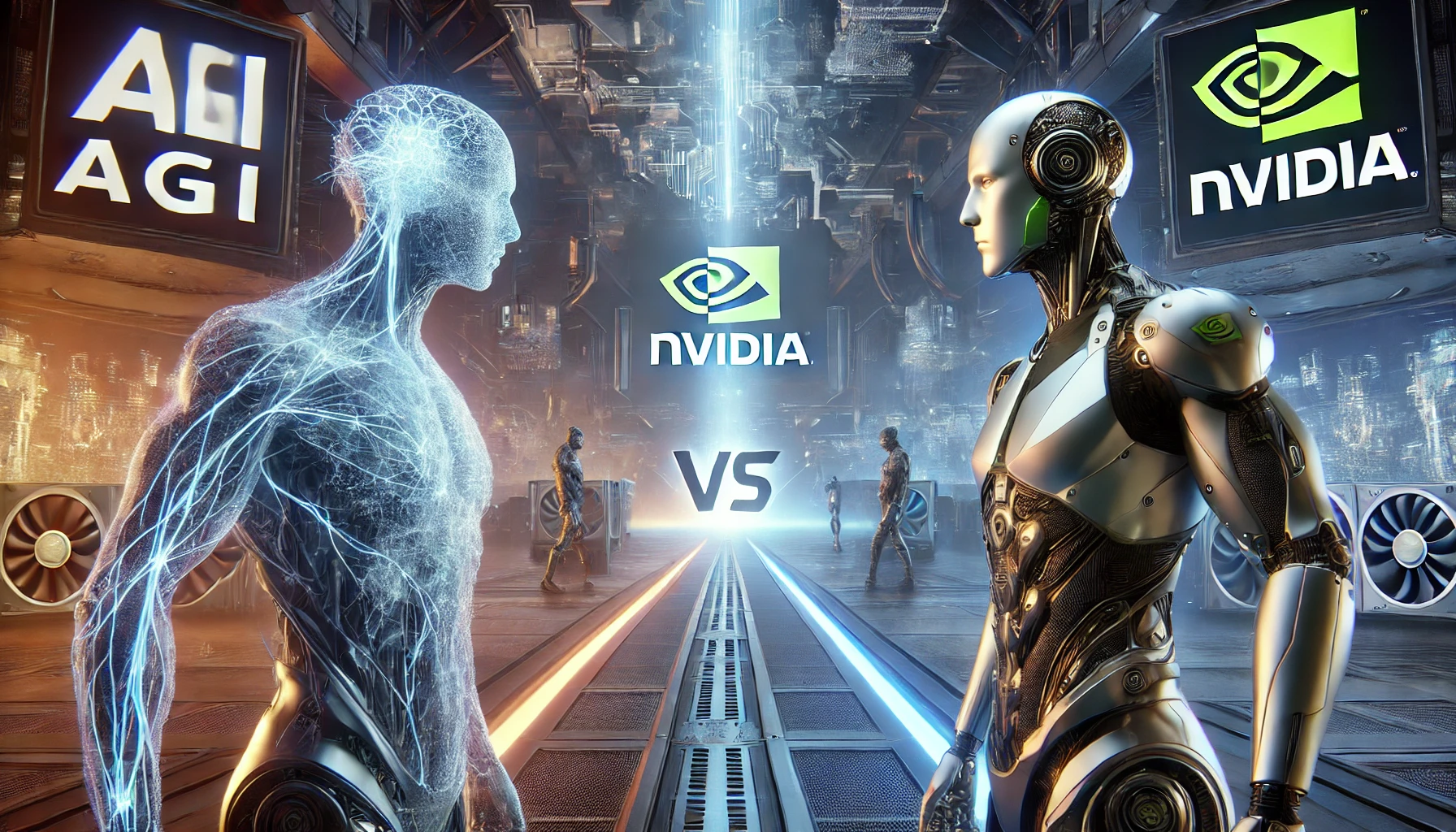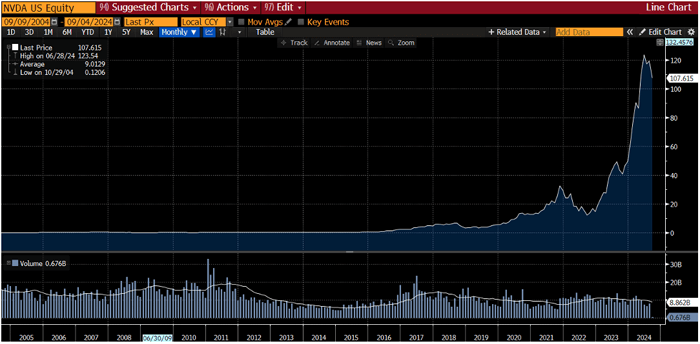In the latest tech shake-up, the U.S. Department of Justice (DOJ) has launched a probe into NVIDIA, the dominant player in the GPU market. The investigation investigates whether NVIDIA’s powerful grip on GPUs and its proprietary software, CUDA, has made it difficult for competitors like AMD to keep up. But the real story goes beyond antitrust allegations—it’s about the intersection of high-speed computing, artificial general intelligence (AGI), and the future of AI.
CUDA: NVIDIA’s Secret Weapon
CUDA (Compute Unified Device Architecture) is at the heart of NVIDIA’s dominance. CUDA isn’t just any software—it’s a parallel computing platform and application programming interface (API) that allows developers to harness the power of NVIDIA’s GPUs for tasks ranging from rendering graphics to training complex AI models. Unlike its competitors, who rely on open-source solutions, NVIDIA has kept CUDA tightly locked, creating a massive ecosystem that is hard to escape.
Since its inception in 2006, CUDA has evolved to become the go-to tool for industries like gaming, artificial intelligence, and scientific research. It allows for unprecedented levels of computation, enabling developers to write algorithms that run directly on NVIDIA’s GPUs. The result? Faster performance, optimized workflows, and a clear market advantage for NVIDIA.
The numbers tell the story: since 2014, NVIDIA has poured over $37.7 billion into research and development (R&D), with another $10 billion slated for this fiscal year alone. This monumental investment has pushed CUDA’s capabilities to the cutting edge, making it nearly indispensable in fields where computational speed is paramount. But while this has fueled NVIDIA’s rise, it’s also raised concerns about whether this kind of market power stifles competition.
AMD’s ROCm: The Open-Source Alternative
Not to be left in the dust, AMD launched ROCm (Radeon Open Compute) in 2016, a direct competitor to CUDA. Unlike NVIDIA’s proprietary system, ROCm is open-source and designed to allow greater flexibility and innovation in the GPU space. However, despite its open-source advantage, ROCm has yet to achieve the widespread adoption of CUDA, primarily because NVIDIA has a massive head start and a more robust ecosystem.
This software competition isn’t just about preference; it’s about control. Complex semiconductors, like GPUs, require an intricate web of software, including drivers, kernels, and APIs, to function optimally. In CUDA’s case, NVIDIA’s control over the entire software stack ensures seamless user performance and locks them into their ecosystem.
AMD’s ROCm, while promising, struggles to break through in part because transitioning from CUDA requires significant effort, training, and investment from developers and organizations already entrenched in NVIDIA’s world. This difficulty in switching is one of the core issues under DOJ scrutiny. Does NVIDIA’s dominance limit the choices available to companies leveraging GPU technology? The DOJ seems to think there might be a case here.
NVIDIA’s Role in the AI Revolution
NVIDIA’s dominance isn’t just a GPU story—it’s an AI story. Since the rise of machine learning and AI, NVIDIA’s GPUs have become the backbone of AI development. From OpenAI’s GPT models to complex neural networks, GPUs are the hardware that powers modern AI, enabling high-speed calculations and data processing that CPUs can’t handle.
The AI arms race is real and accelerating. Companies like Microsoft, Alphabet, and OpenAI are investing billions in AI research and development, pushing the boundaries of what’s possible. At the heart of it all? NVIDIA’s GPUs and CUDA.
OpenAI’s journey toward AGI—artificial general intelligence—relies heavily on NVIDIA’s hardware. AGI is the holy grail of AI research, representing a system capable of performing any intellectual task a human can. AI models must be trained on enormous datasets, requiring immense computational power to get there. NVIDIA’s GPUs provide the processing speed necessary to train these models quickly and efficiently, putting them at the center of the AI revolution.
In recent years, we’ve seen a surge in AI-driven innovation, from self-driving cars to advanced natural language processing. This is powered by the same technology under investigation by the DOJ. While the legal case may focus on NVIDIA’s potential antitrust practices, its GPUs are indispensable in today’s AI landscape. The world needs speed, and NVIDIA delivers it.
The Speed Race: Why AI Needs Faster Hardware
As AI grows more complex, so does its need for faster, more efficient hardware. The pursuit of AGI is pushing the limits of what today’s hardware can do. In 2023, OpenAI released its “Strawberry” model, a step toward creating AGI. The model demonstrated enhanced reasoning capabilities, bringing us one step closer to achieving genuinely general intelligence. But even this breakthrough required cutting-edge hardware, and it’s just the beginning.
AI models will only get more extensive and robust, requiring more significant computational resources. NVIDIA’s GPUs are designed to meet these needs, and its R&D investments continue to ensure they stay ahead of the curve. CUDA plays a vital role here, optimizing GPU performance to squeeze every ounce of power from the hardware. The faster the hardware, the faster AI can learn, process, and generate results. And in a world where AI is taking over everything from healthcare to finance, speed is everything.
What the Future Holds
The DOJ’s investigation into NVIDIA shows the growing importance of semiconductors and AI in today’s world. However, while the legal focus may be on antitrust concerns, the real story is about speed, innovation, and the future of AI.
NVIDIA’s dominance in GPUs and CUDA has undoubtedly given it a market advantage. Whether this stifles competition is up for debate, but what’s clear is that without NVIDIA’s contributions, the AI revolution wouldn’t be where it is today. As the race toward AGI heats up, companies will continue to push the boundaries of what’s possible, relying on hardware that can keep up.
Like most governments, politicians, and bureaucrats, pursuing power, control, and wealth often drives their actions. The authority overseeing the development or use of artificial general intelligence (AGI) is comparable to the power of the One Ring from J.R.R. Tolkien’s Lord of the Rings, symbolizing ultimate control and dominance.
Bitvision will continue to monitor developments in this space, providing insights into the latest AI breakthroughs and the role of companies like NVIDIA in shaping the future of technology. Stay tuned as we track the DOJ investigation and its implications for the world of AI and beyond.



